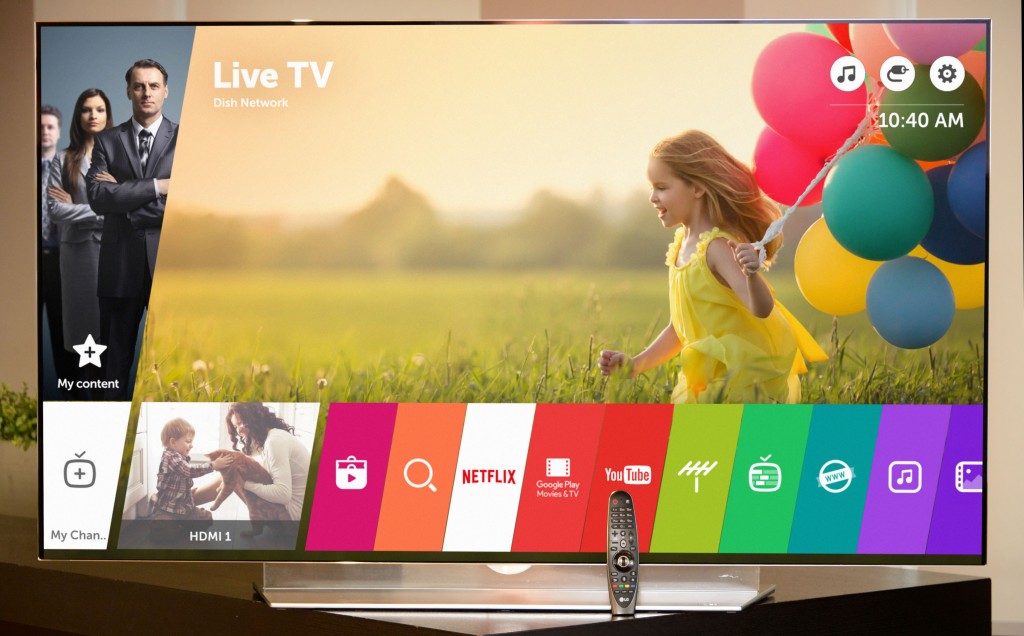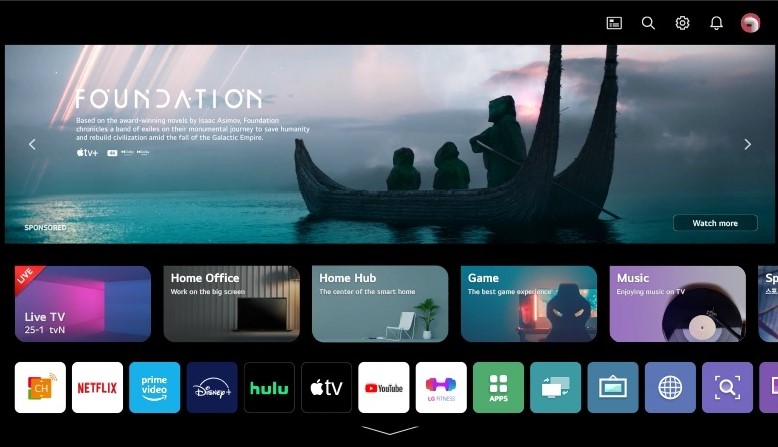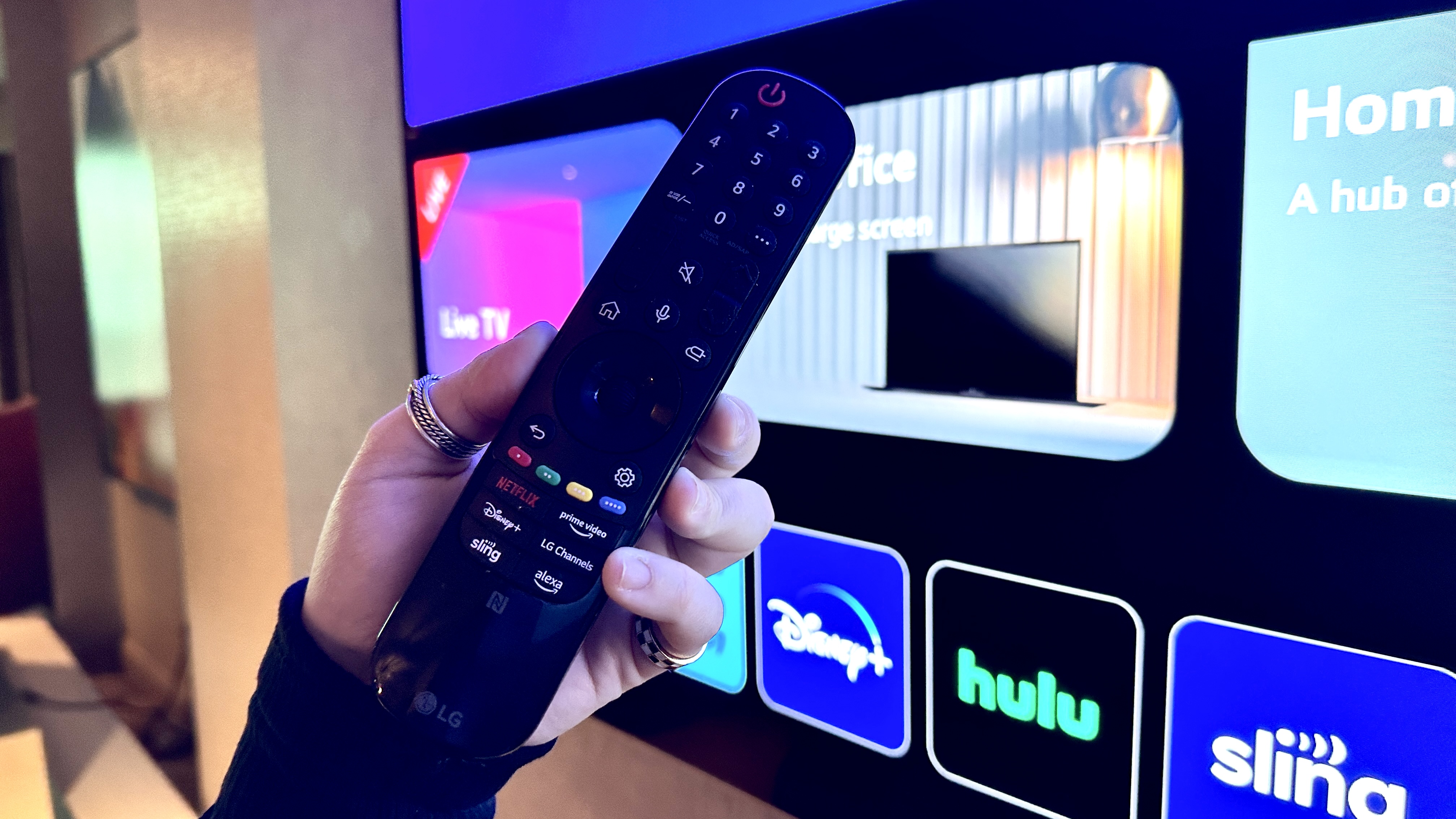It’s time to upgrade my LG TV — and not for the reason you’d expect
The best TVs every year are always worth a look. Whether you are adding another TV to your home or looking to upgrade your existing TV, each year TVs take a step forward that makes getting one seriously appealing.
This is especially true if — like me — you haven’t updated your TV in several years. In fact, I currently am on year seven with my current LG 4K TV and I’ll be honest, I hadn’t felt left behind until recently.
Don’t get me wrong, I knew that as the years went on that my LG 55UJ7700 (opens in new tab) couldn’t hang with the best OLED TVs with its LCD screen, but I still had support for HDR10 and Dolby Vision. Combined with a 60Hz refresh rate, I never felt like I was lagging when playing Xbox games or was missing out on the picture quality of the latest top shows and movies.
But now, I find myself itching to make an upgrade, and the reason isn’t the lack of an OLED display — though there’s no way I don’t at least shell out for the LG A2 OLED TV with its sub $1,000 price tag for a 55-inch display. And it isn’t the lack of HDMI 2.1 ports given that I’m frankly fine with 4K resolution at 60fps.
No, the reason I want to upgrade is that the smart features of my old LG TV are sorely lacking — and I want to upgrade to the latest webOS.
What is webOS and why you need to upgrade

webOS is LG’s popular smart TV platform. All of the best TVs are smart TVs at this point, and even the best budget TVs are all using a smart TV platform, whether it is LG’s webOS, Samsung’s Tizen, Roku TV, Google TV, Vizio’s SmartCast or even Fire TV. You basically cannot get a “dumb TV” anymore, which definitely wasn’t the case back in 2017 when I bought my LG TV.
But my LG TV was, in fact, a smart TV. It ran webOS 3.5 initially and eventually was upgraded to webOS 5.8 but I rarely found myself using it. I was constantly using my Xbox as it gave me similar functionality. I even ditched the Magic Remote that came with my TV for a Logitech Harmony 650 so I could turn on my Xbox One S and my LG TV and control both with one remote. But now I find myself gaming less and wishing to use a smart TV more and my current TV just won’t cut it.
That’s because LG actually stopped updating the webOS on my TV back in 2020. Since then, I have missed out on three new versions of webOS: webOS 6 (opens in new tab), webOS 22 (opens in new tab) and now webOS 23 (opens in new tab), which will be coming to the new 2023 LG TV lineup. This is common practice with LG TVs, as LG typically reserves the newest version of webOS for the newest models.

Between those three versions, a lot of changes have been made. The user interface is completely different, transitioning from a bar of app shortcuts at the bottom of the screen to a full-screen desktop similar to the user interface of most current smart TVs. The Magic Remote has also received some serious upgrades, getting hotkeys for popular apps and added voice support for Amazon Alexa and Google Assistant through the LG ThinQ AI.
And those were just the upgrades from webOS 5 to webOS 6. webOS 22 added even more features including a built-in fitness app, additional user profiles and an ambient mode reminiscent of the Samsung Frame.
Finally, webOS 23, the most recent version of webOS added an additional level of smarts to the LG smart TV lineup. AI Concierge curates content based on your usage and searches and a new UI makes watching your favorite content easier than ever. LG also added support for Matter, the universal smart home protocol that companies including Google, Amazon and more have started to adopt to ensure your smart home technology works together seamlessly.
This means you could be able to control smart home devices from your LG Magic Remote. Now that’s a serious upgrade.
Verdict: Upgrading might actually make my smart TV smart

I’ll be honest, I’m still not sure that I’ll feel the need to fully upgrade to the 2023 LG TV models. While the LG G3 OLED TV is a definite step up from the LG G2 OLED TV, other TVs, including the LG C3 OLED TV and LG B3 OLED TV, aren’t markedly better than their predecessors. The LG C2 OLED TV remains a great choice for most people and the A-series was discontinued in the US, so if I want to really save some money I’ll need to get last year’s A2 OLED or the B2 OLED if I want 120Hz refresh rate.
So then it comes down to smart TV features and that means pitting webOS 22 vs webOS 23, and that might be enough to push me toward the newest models. While LG has previously indicated that Matter support will come to the 2022 LG TV lineup, at the moment only the 2023 lineup is confirmed to get Matter support. Additionally, AI Concierge and the redesigned UI could really make it easier for me to discover new content and watch my favorites all in one place.
Finally, as someone who has lived in the past for the past several years, I may just want to futureproof my new TV as possible. But regardless of whether I ultimately choose webOS 22 or webOS 23, I can’t wait to have a smart TV that’s actually smart.
More from Tom’s Guide
For all the latest Technology News Click Here
For the latest news and updates, follow us on Google News.
